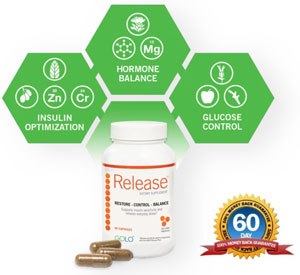Fitness
How can I improve my running speed and stamina?
Published
2 years agoon
By
mbkteam
Running is a passion shared by millions worldwide. Whether you're training for your first 5K, looking to shave time off your marathon personal best, or want to enhance your fitness, improving both speed and endurance can transform your running experience. Mastering these two key aspects involves combining strategy, training, and lifestyle adjustments. This comprehensive guide delves into the effective techniques that can propel your running performance to new heights, backed by expert advice and actionable insights.
Understanding the Foundations of Speed and Endurance
To truly excel in running, a thorough understanding of the physiological foundations of speed and endurance is crucial. Speed is largely determined by your body's ability to perform at high intensities for short durations, tapping into anaerobic energy systems. Conversely, endurance depends on your aerobic system's capability to sustain lower-intensity efforts over prolonged periods.
The Aerobic and Anaerobic Energy Systems
Your aerobic energy system, which uses oxygen to convert carbohydrates and fats into energy, is essential for endurance activities. This system supports activities lasting longer than several minutes, such as half-marathons and marathons. In contrast, the anaerobic system generates energy without oxygen, providing quick bursts of power ideal for sprints and high-intensity intervals.
VO2 Max and Lactate Threshold
Two critical metrics can offer insights into your running potential: VO2 max and lactate threshold. VO2 max measures the maximum amount of oxygen your body can utilize during intense exercise. The higher your VO2 max, the more oxygen your muscles can use, enhancing endurance. The lactate threshold, on the other hand, is the intensity at which lactate accumulates in the blood. Training to increase both these metrics can significantly improve performance.
Essential Strategies for Enhancing Speed
Improving speed requires targeted training that pushes your body's limits, enabling it to perform faster and more efficiently.
Incorporating Interval Training
Interval training is one of the most effective methods for boosting speed. This involves alternating periods of high-intensity running with recovery periods. For instance, you might sprint for 30 seconds, then jog or walk for 60 seconds, repeating this cycle multiple times. This training enhances both aerobic and anaerobic systems, making your body more efficient at managing high-intensity efforts.
Fartlek Workouts
Originating from Sweden, Fartlek translates to “speed play” and is a form of interval training without strict structure. During a Fartlek workout, you vary your running speed at random intervals, such as increasing your pace at every other lamppost. This unpredictable pattern keeps the body guessing, improving adaptability and speed.
Strength Training
Strength training complements running by building muscle power and endurance. Focus on compound movements like squats, lunges, and deadlifts, which target the major muscle groups used in running. Plyometric exercises like box jumps and burpees can also enhance muscular power and sprinter speed.
Track Your Progress
Consistently tracking your progress helps monitor improvements and adjust training plans accordingly. Utilize apps and wearables to log your speed, distance, and other vital stats. Peloton, for instance, offers a comprehensive platform where you can track your metrics and progress over time (visit Peloton for more details).
Building Unshakeable Endurance
Developing robust endurance is a gradual process that requires dedication and strategic planning.
Long Slow Distance Runs
Long, slow-distance (LSD) runs are the cornerstone of endurance training. These runs, conducted at a comfortable pace, help develop the aerobic system and increase the body's ability to utilize fat as an energy source. Aim to run at a pace where conversation is possible, gradually increasing the distance each week.
Tempo Runs
A tempo or threshold run involves running at a “comfortably hard” pace. This is slightly faster than your usual running speed but sustainable for 20 to 30 minutes. Tempo runs push your lactate threshold higher, allowing you to run faster without accumulating as much lactate, delaying fatigue.
Progression Runs
Progression runs start at a comfortable pace and gradually increase in speed. This type of run simulates the fatigue experienced towards the end of a race, teaching your body to maintain efficiency even when tired. It also helps you gradually push your endurance limits.
Fueling Your Body
Nutrition plays a pivotal role in building endurance. A balanced diet rich in carbohydrates, proteins, and fats provides essential fuel for long runs. Hydration is equally critical; consider electrolyte solutions during longer training sessions to replenish lost minerals.
Integrating Recovery and Rest
Recovery is where the magic happens. Without adequate rest, your body cannot repair and strengthen muscles, making you susceptible to injuries.
Active Recovery
Incorporate active recovery days involving low-intensity activities such as walking, swimming, or yoga. These activities promote blood flow, aiding muscle recovery without adding stress to your body (learn more about effective recovery from Women's Health).
Sleep
Quality sleep is non-negotiable. Aim for 7-9 hours of sleep each night to allow your body to repair and recharge. Sleep deprivation can impair performance, increase injury risk, and hinder recovery.
Listening to Your Body
Pay close attention to how your body feels. Signs of overtraining, such as persistent fatigue, decreased performance, or mood swings, should prompt you to take a step back and rest. Balancing intense training with periods of rest ensures sustainable progress.
Mental Strategies for Peak Performance
Mental toughness is as essential as physical fitness for runners. The right mindset can push you through tough training sessions and races.
Setting Realistic Goals
Setting achievable short-term and long-term goals keeps you motivated. Whether improving your 5K time or completing a marathon, having clear objectives provides direction and purpose to your training. Regularly reassess your goals based on progress and adjust them accordingly.
Visualization Techniques
Visualization involves mentally rehearsing your runs and picturing yourself succeeding. This practice can enhance focus, reduce anxiety, and boost confidence. Before a race or a challenging workout, spend a few minutes visualizing your success.
Mindfulness and Relaxation
Running can trigger a fight-or-flight response, circulating stress chemicals. Practicing mindfulness can help manage these responses. Focus on your breathing, engage your senses, and try to stay present during your runs to foster a state of calm and control.
Advanced Training Techniques
Incorporating advanced techniques can lead to substantial gains for seasoned runners looking to push boundaries.
High-Intensity Interval Training (HIIT)
HIIT involves short bursts of intense exercise followed by rest or low-intensity periods. This training enhances aerobic and anaerobic fitness, improves muscle power, and maximizes calorie burn. HIIT sessions can be tailored to your specific needs, making them a versatile addition to your training regime.
Cross-Training
Engaging in other forms of exercise, such as cycling, swimming, or rowing, can improve overall fitness and prevent overuse injuries. Cross-training works for different muscle groups and can enhance cardiovascular fitness, contributing to better running performance.
Altitude Training
Training at high altitudes, where the air is thinner, can enhance endurance by stimulating the production of red blood cells. This allows the blood to carry more oxygen, improving aerobic capacity and VO2 max. If altitude training is not feasible, consider using altitude masks or simulated altitude chambers.
Periodization
Periodization involves structuring your training into cycles, each with a specific focus, such as building endurance, increasing speed, or tapering before a race. This systematic approach helps avoid plateaus, optimize performance, and reduce injury risk.
The Role of Technology in Modern Training
Leveraging technology can offer valuable insights and enhance your training efficiency.
Wearable Tech
Wearable technology, such as smartwatches and fitness trackers, provides real-time data on heart rate, pace, and distance. Devices from brands like Garmin and Apple can help monitor progress and tailor training plans based on performance data.
Apps and Online Platforms
Training apps and online platforms like Peloton and Strava offer structured training programs, virtual coaching, and community support. These tools can keep you motivated, provide expert guidance, and track your progress comprehensively.
Conclusion
Improving your running speed and endurance is an ongoing journey that combines physical training, mental fortitude, and lifestyle adjustments. By integrating the strategies outlined in this guide, you can make substantial strides toward achieving your running goals. Remember, consistency is key; celebrate small victories and stay committed to the process. Running enhances physical fitness and fosters a resilient mindset, preparing you to tackle challenges on and off the track. With dedication, the right techniques, and a positive attitude, you can unlock your full running potential.













